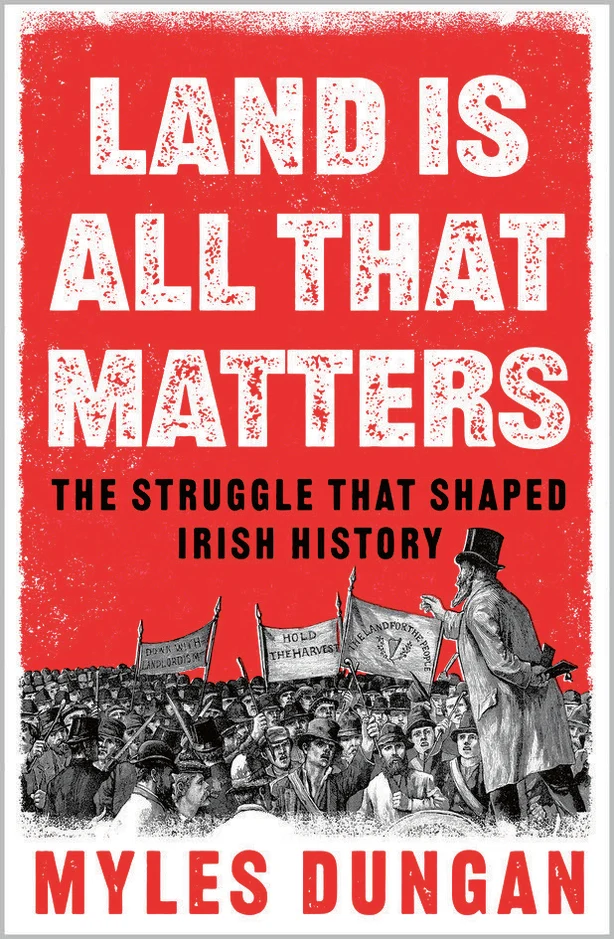He also – importantly – makes use of the National Folklore Collection, "a vital reservoir of myth as well as oral history", which he explains helps to highlight "ideas of communal perception and collective 'memory’ over statistical reality". Sometimes, what we think happened is just as important, and as influential, as what actually happened. This is certainly true of the land struggle.
One of the striking aspects of that struggle is the sheer scale of the violence. In the twenty years before the Great Famine, 100 policemen were killed, and another 500 wounded in clashes with members of the various "Ribbon" factions; at least 35 members of the "Rightboys" group were shot dead in clashes with the British Army; between 1880 and 1882, there were 50 agrarian murders and 148 attempted murders, and 776 cases of arson.
And then there were the Rockites, a movement which emerged in Munster during the agricultural depression following the Napoleonic Wars. As Dungan tells us: "The Rockites were capable of launching military operations, in significant numbers, in daylight hours, with relative impunity... Arguably, the Rockites exhibited almost as much centralised command and control as the War of Independence IRA..."
The Rockites were openly sectarian as well as violent; and while that violence would not be endorsed by the constitutional leader of the day, Daniel O’Connell, it was politically useful to him. As subsequent political leaders (most obviously Parnell) would discover, the threat of violence strengthened the hands of those seeking reform.
Up to a point, of course; when violence and radicalism became politically inconvenient, they could quickly be ditched, laying the basis for a social revolution which was decidedly conservative.
As in every struggle, there were winners and losers.
This brings us to another striking feature of the land struggle – the class divisions among the rural population, sometimes leading to outright conflict between better-off and poorer tenants (such as that between the Caravats and Shanavests in the first decade of the 19th Century), sometimes being submerged in a common assault on landlordism (such as under the Land League).
But conflict between the classes was more prevalent than co-operation – most agrarian violence, Dungan tells us, was directed at other tenants, rather than at landlords.
The decline of the agricultural labourer class after the Famine left better off tenant farmers in a stronger position to take on the landlords, without the danger of violence from below. Fewer farmers meant fewer options for landlords – the threat of eviction was less potent when there wasn’t a queue of aspiring tenants willing to pay higher rents.
Common interest in rent reductions led different classes to combine in the Land League during the period of the Land War from 1879 to 1882. But arbitration courts set up under Gladstone’s 1881 Land Act took the sting out of that particular conflict. Better-off tenants achieved substantial rent reductions, which did little or nothing for smaller farmers and labourers. The movement was thus split, the land agitation ended, and Parnell could turn his attention to political matters, with which he was more comfortable.
As Dungan observes: "When viewed dispassionately, the story of the Land War is of how small farmers, and their Fenian allies, were exploited by a new elite to shake the money tree and topple the aristocracy from the uppermost branches." Which is not how the period is usually remembered.
The "Land Question" was eventually solved through tenant purchase, under which the British Government lent tenants money to buy out their holdings (a process which was deliberately spread over at least two generations). But for those without land – or still on uneconomic holdings of less than ten acres – the end of the landlord meant little or nothing.
As in every struggle, there were winners and losers. Had it not been for the safety valve of emigration, the violent struggle over land might have continued, with far more revolutionary results.
There is much, much more in this book than a brief review can mention. But it makes a convincing case that if land isn’t all that matters, it certainly mattered a great deal, and the struggle over land helps to explain the development of Irish society over the course of the last two centuries.

Land Is All that Matters is published by Bloomsbury
Disclaimer: The copyright of this article belongs to the original author. Reposting this article is solely for the purpose of information dissemination and does not constitute any investment advice. If there is any infringement, please contact us immediately. We will make corrections or deletions as necessary. Thank you.






